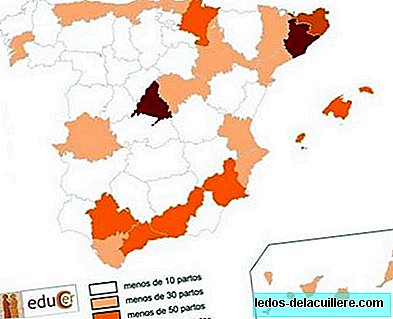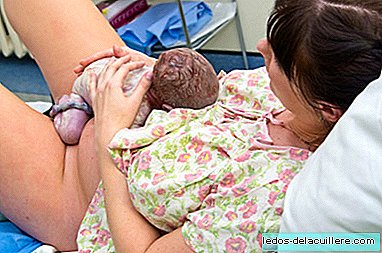
How many women decide to give birth at home in Spain? For the first time we have statistical data and a complete map in this regard that clarifies this issue that we often talk about in the blog.
The Educer team, dedicated to the care and training of families and professionals on issues related to pregnancy, childbirth and parenting, has opened a collection of interesting reports under the title “Home Birth Observatory in Spain”.
We already have two reports, which can be consulted from their website, the first of which is a technical introduction on the definitions, sources and calculation methods that will serve as a reference for subsequent studies.
The second is a work of applying these calculation criteria to the birth data of 2010 (the last one published at the date of preparation of this report). Thus, for the first time in Spain, a Statistical analysis of home delivery distribution in Spain by provinces and autonomous communities.
As in Spain there is no general record of where parents want to give birth to their children but only of the place where it finally occurs, it is not possible to give exact figures on the number of births planned at home.
But the authors have applied various statistical means to discard accidentally home births from the study. It is about removing, from the list of home births, all those who are multiple births, which occur before week 37 and are not assisted by a healthcare professional. In this way, without being exact, the approach is more reliable.
The research work has been directed by the anthropologist Fidel Romero Salord and Dr. Alicia Fontanillo, a gynecologist with more than twenty years of experience in home delivery care in the province of Alicante, has intervened.
With this work the authors intend to "make available to professionals, families and institutions, truthful, verifiable and updated information on the practice of home birth in Spain"In addition, they remind us that we talk about figures, yes, but also about people:
It is worth remembering, in the middle of maps and tables, that we are talking about babies, mothers, fathers, families and professionals ... of endearing stories that will never be encompassed in statistical data. Our interest in knowing the global figure is based on the accompaniment we make to some of these stories. We hope that, in the same way, the interest in the data presented here will help readers to get closer, beyond the numbers, to the people who star in them.
We leave you with the most relevant aspects of the study and encourage you to consult the full document, as well as the successive studies that seem so promising.
In 2010, between 600 and 1000 deliveries were attended at home in a planned manner.
In absolute numbers Barcelona is the province where this practice is most widespread, with an annual figure close to 230 deliveries planned at home. It is followed by Madrid with approximately one hundred deliveries. Behind them are Girona with about 50 deliveries, Granada around 40 and Navarra with less than 30.
On the other hand, there are provinces such as Salamanca, Zamora, Albacete, Ciudad Real, Cuenca, Ceuta, Melilla, Castellón and Lugo where there were hardly any exceptional cases of planned birth at home in 2010.
The average for all Spain of home deliveries planned over total births was around 0.17% (approximately one in 600 deliveries).
In the calculation by Autonomous Communities important differences are appreciated. Thus, the highest percentage is recorded in the Autonomous Community of Navarra with one in every 250 births, a figure very similar to that of Catalonia.
The lowest percentages are given in Galicia and Castilla la Mancha where of every 1,500 deliveries, only one is planned at home.
Anyway, although the data of Map of home birth in Spain show an increase in this option in recent years, the figures are still far from those collected in other countries such as England (one in every 35 births), where home-assisted delivery is considered as another possibility within the National System of Health.












